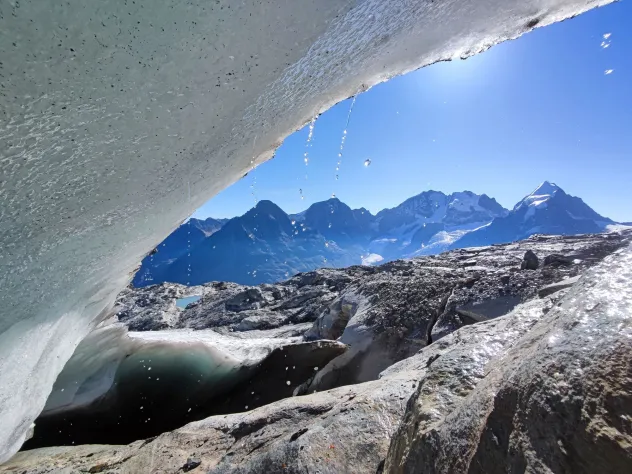The Swiss glaciers experienced a significant retreat in 2024, surpassing the average melting rate of the previous decade. Despite a promising start with heavy snowfall during the winter and spring, the scorching summer temperatures, particularly in August, led to record ice losses.
According to GLAMOS, the monitoring body, Swiss glaciers lost 2.5% of their volume this year. This is alarming, considering the favorable conditions at the beginning of the year. One contributing factor to the accelerated melting was dust from the Sahara, which darkened the ice and reduced its ability to reflect sunlight.
Switzerland, home to more than half of the Alpine glaciers, is witnessing temperatures rise at a rate twice the global average due to climate change. This rapid warming has not only caused glaciers to melt but has also led to changes in watersheds along the country’s borders with Italy. As a result, the Swiss government has approved revisions to certain border segments to reflect the shifting landscape.
In conclusion, the alarming rate of Swiss glaciers melting highlights the urgent need for action to address climate change. The loss of glaciers has significant implications for water resources, ecosystems, and tourism. More than half of the glaciers in the Alps are in Switzerland where temperatures are rising by around twice the global average due to climate change.
If greenhouse gas emissions continue to rise, the Alps’ glaciers are expected to lose more than 80% of their current mass by 2100 so it is imperative to adopt sustainable practices and implement policies to mitigate the impacts of climate change and protect these vital natural resources.
Reference- Reuters article, GLAMOS website, BBC, The Guardian
